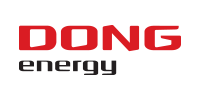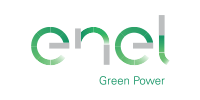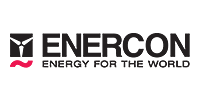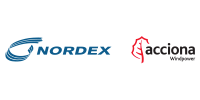14:30 - 16:00 Floating wind: towards commercial deployment
Turbine technology

Room: Hall G2
This session will look at the current position in floating wind energy, especially the latest technology developments towards its commercialization, and the challenges and future prospects of this exciting and promising way of harvesting offshore wind energy.
You attended this session?
Learning objectives
- Understand the current state of development of floating wind energy;
- Acquire an overview of the different technologies of floaters and the challenges associated with them;
- Understand the key drivers toward commercial deployments of floating wind energy.


Presenter

Co-authors:
Denis Matha (1) F German Perez (2) Kolja Mueller (3) Alexander Mitzlaff (1) Christof Wehmeyer (4)
(1) Ramboll, Hamburg, Germany (2) Tecnalia, Derio, Spain (3) University, Stuttgart, Germany (4) Ramboll, Esbjerg, Denmark
Presenter's biography
Biographies are supplied directly by presenters at WindEurope Summit 2016 and are published here uneditedDenis Matha is a Senior Engineer at Ramboll Wind in Hamburg and is responsible for the Floating Wind activities at Ramboll. He holds a Dipl.-Ing. Degree in Aerospace and Aeronautical Engineering from the University of Stuttgart, Germany and was also educated at the University Southampton, UK and at NREL, USA. He is an expert in floating offshore wind turbines and is working in this field since 2008. He has participated in major R&D projects in this area including EU projects Upwind, Innwind, Offwindtech, AFOSP and currently LIFES50+ and the IEC project team on the new floating wind standard.
Abstract
Industrial design considerations for floating wind turbines
Introduction
In order to advance FOWT technology to a status comparable to fixed-bottom substructures and to reduce costs by realising the economy of scale effect, a major task remains in establishing of an comparable industrialized design process where standardized design and realization procedures are well established throughout the industry.
Approach
The ambition of this paper is to provide input for a roadmap to an industrialized design process by presenting a design brief, that describes procedures and methodologies, which need to be addressed to develop an industrialized FOWT design process. These elements are identified through a comparative analysis of the current fixed-bottom and floating design methods. Key design elements and challenges are characterized and presented, which are important for a FOWT design process in order to arrive at an industrial reliable and efficient level applicable for industrial scale multiple-unit design comparable to the fixed-bottom design process today. The content is aligned with work performed in the Ramboll-led work package “Concept Industrialization” of the European H2020 LIFES50+ project.
Main body of abstract
In the first part general considerations on the industrial design procedure for commercial offshore wind projects, both valid for fixed and floating foundations are described, including the phases in a wind farm project from the point of view of a substructure designer, main design analyses required in the numerical design process of an offshore wind turbine substructure (structural primary and secondary steel design procedure, design load case clustering and DLC selection, load iteration schemes and applied numerical methods), numerical software requirements for an industrialized application, and an industry view on the multiple interactions and involved parties within such a project. Also a summary of non-technical, but highly relevant industrial aspects related to efficient project execution and quality management.
Key elements are identified that are unique and/or different for FOWTs – this includes e.g. the requirement to adapt the controller to the specific platform behaviour, as well as a tower and/or selected RNA component redesign, and also includes differences in terms of defining and performing load case simulations. Also floating specific required numerical methodologies applied for the detailed structural and mooring design where challenges exist regarding the interface between coupled global loads analyses tools and detailed structural, mooring, and geotechnical tools.
A further key item discussed in this respect is the industry-common load exchange practice for fixed-bottom design, where only a limited data exchange between WT manufacturers and platform designers is done; a procedure that is challenging to be applied for FOWTs. In particular, the paper proposes a FOWT detailed structural design procedure by coupling a hydrodynamic potential theory solver and a time-domain software code with a finite element tool. For specific snapshots in time, the external forces and pressure distribution acting on the FOWT hull are applied on the finite element model in order to determine the stresses in the structure. The hydrodynamic pressure distribution accounts for the current wave phase (or phases in superposed seaways) and is applied on the dedicated finite element centre nodes as well as the hydrostatic pressure distribution. The dynamic equilibrium of forces is ensured since the instantaneous FOWT position and accelerations are included in the finite element model, as well as aerodynamic and mooring line forces.
Conclusion
The paper is intended as a technical review of existing fixed-bottom design procedures and, facilitated through a comparative analysis with these established design methodologies, identifies and presents the key design elements and challenges for industrialized FOWT design. This project has received funding from the European Union’s Horizon 2020 research and innovation programme under grant agreement No 640741.
Learning objectives
The content of the paper will provide input for the focused development of design processes for industrialized detailed design of FOWTs to guarantee the demanded TRL and MRL levels and ultimately improve their CAPEX and OPEX by applying industrial design procedures.





Follow EWEA on: